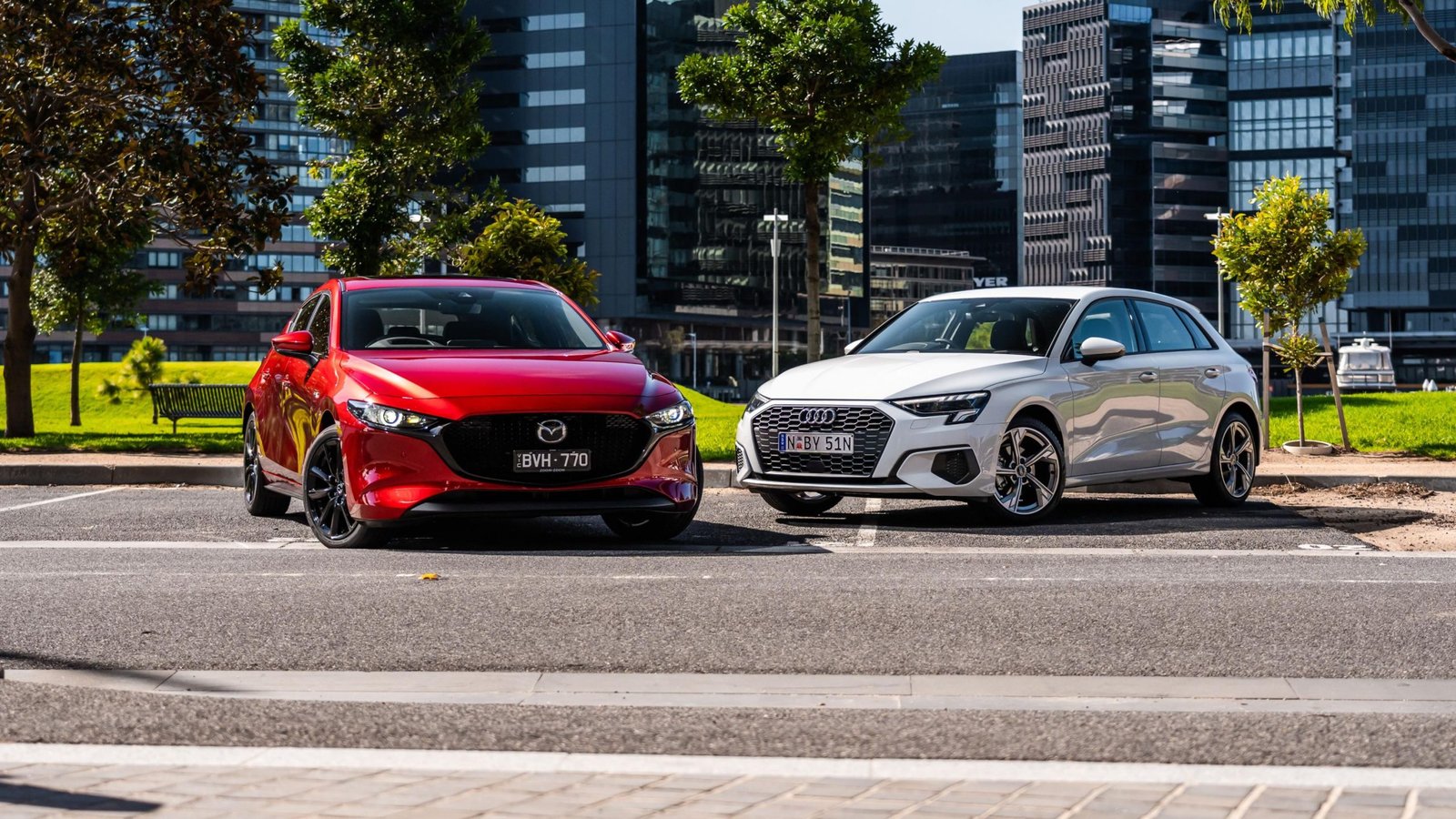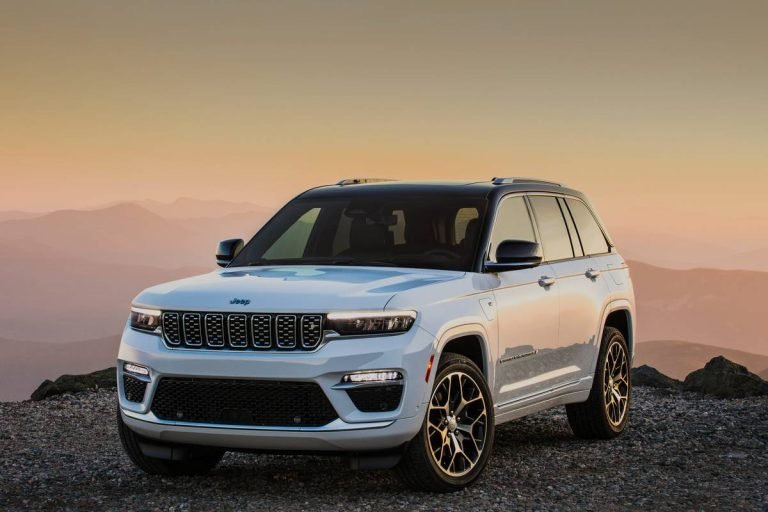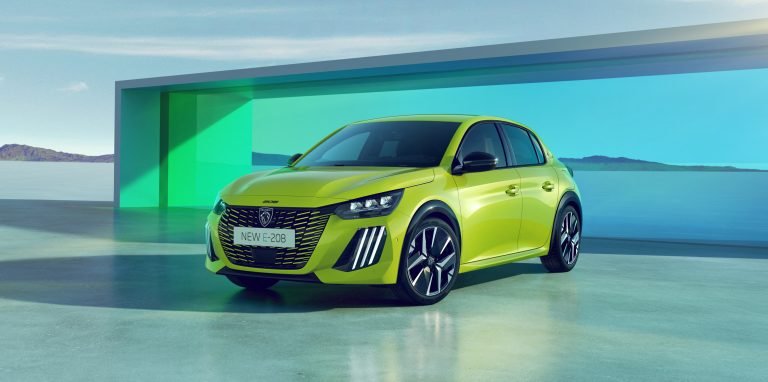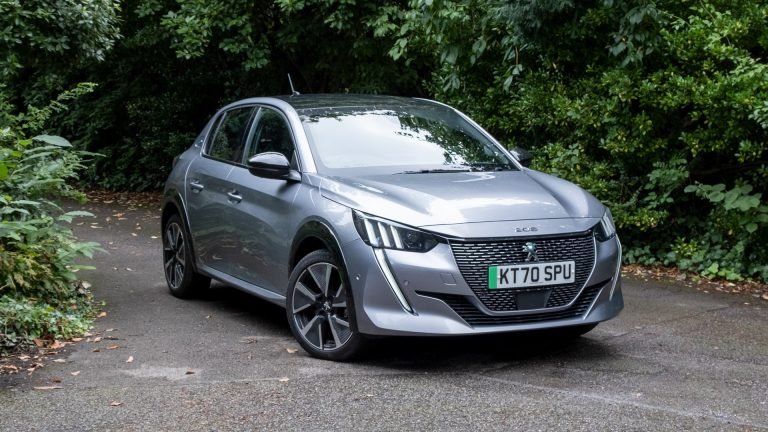Hyundai I30 vs Mazda 3: Uncovering the Ultimate Winner
The hyundai i30 and mazda 3 are both reliable and popular options, but the better choice ultimately depends on your specific preferences and needs. The hyundai i30 offers a comfortable ride, ample cargo space, and excellent fuel efficiency, making it an ideal choice for daily commuting.
On the other hand, the mazda 3 stands out with its stylish design, responsive handling, and advanced safety features, making it a great option for those who prioritize a sportier driving experience. Consider your priorities to determine which car suits you best.
Both vehicles offer their own unique appeal, so take into account factors such as budget, desired features, and personal taste to make the right decision.

Credit: www.whichcar.com.au
Performance Comparison Of Hyundai I30 And Mazda 3
When it comes to performance, both the hyundai i30 and mazda 3 offer impressive options for drivers. Let’s take a closer look at how the powertrain options, acceleration and top speed, handling and maneuverability, and fuel efficiency compare between these two popular car models.
Powertrain Options:
- Hyundai i30: The i30 offers a range of engine choices, including a 1.0-liter turbocharged petrol engine with 120 horsepower, a 1.5-liter turbocharged petrol engine with 160 horsepower, and a 1.6-liter diesel engine with 115 or 136 horsepower.
- Mazda 3: The mazda 3 is available with a 2.0-liter or 2.5-liter skyactiv-g petrol engine, both delivering excellent performance and efficiency.
Acceleration And Top Speed:
- Hyundai i30: Depending on the engine chosen, the i30 can accelerate from 0 to 60 mph in around 8 to 11 seconds and reach a top speed of 120 to 130 mph.
- Mazda 3: With its responsive skyactiv-g engines, the mazda 3 offers quick acceleration, reaching 0 to 60 mph in approximately 7 to 9 seconds, and achieving a top speed of 130 to 140 mph.
Handling And Maneuverability:
- Hyundai i30: The i30 delivers a comfortable and composed driving experience with precise steering and a well-balanced chassis. It provides a smooth ride and is easy to maneuver in various driving conditions.
- Mazda 3: Known for its sporty handling, the mazda 3 offers agile and responsive steering, making it a joy to drive on winding roads. It provides a great sense of control and stability, enhancing the overall driving experience.
Fuel Efficiency:
- Hyundai i30: The i30 boasts impressive fuel efficiency across its engine lineup. The 1.0-liter turbocharged petrol engine offers up to 50 mpg, while the diesel engines provide even greater efficiency, with some models achieving up to 70 mpg.
- Mazda 3: The mazda 3 is also lauded for its fuel efficiency, with the skyactiv-g engines delivering excellent mileage. Drivers can expect to achieve around 40 to 45 mpg on average, depending on driving conditions and engine choice.
Comparison Of Driving Experience:
- Both the hyundai i30 and mazda 3 offer a comfortable and enjoyable driving experience, with smooth rides and responsive handling.
- The i30 is known for its refined and quiet cabin, providing a comfortable space for passengers.
- On the other hand, the mazda 3’s interior is known for its upscale and premium feel, with high-quality materials and stylish design.
Both the hyundai i30 and mazda 3 offer impressive performance characteristics, with a range of powertrain options, strong acceleration, excellent handling, and fuel efficiency. The choice between the two ultimately depends on personal preferences and priorities, whether it be a preference for fuel efficiency or a sportier driving experience.
Exterior Design And Features
Styling And Aesthetics
The exterior design of a car plays a crucial role in determining its overall appeal. When it comes to the hyundai i30 and mazda 3, both models have distinctive styling and aesthetics that capture attention on the road. Here are some key points to consider:
- The hyundai i30 boasts a modern and sleek design that exudes confidence. Its fluidic sculpture 2.0 design philosophy gives it a bold and dynamic look, with sharp lines and sculpted curves.
- On the other hand, the mazda 3 showcases a more elegant and refined aesthetic. Its kodo design language emphasizes a sense of movement, complemented by a sculpted body and smooth surfaces.
Body Dimensions And Proportions
The dimensions and proportions of a car can greatly influence its visual appeal and functionality. Let’s take a closer look at the body dimensions of the hyundai i30 and mazda 3:
- The hyundai i30 is a compact hatchback with a length of around 4,340mm, width of approximately 1,795mm, and a height of about 1,455mm. These dimensions make it well-suited for maneuvering through tight spaces while still offering ample interior space.
- On the other hand, the mazda 3 shares a similar compact dimensions with a length of around 4,465mm, width of approximately 1,795mm, and a height of about 1,435mm. Its slightly longer body gives it a more elongated and sporty appearance.
Headlights, Grilles, And Other Exterior Elements
The front-end styling of a car, including the headlights, grilles, and other exterior elements, can provide unique character and distinction. Let’s compare the hyundai i30 and the mazda 3 in terms of their front-end design:
- The hyundai i30 features sharp and angular headlights that seamlessly blend with its bold grille. Its cascading grille design adds a touch of sophistication, complemented by sleek led daytime running lights.
- On the other hand, the mazda 3 showcases striking led headlights that seamlessly integrate into its sleek front grille. The prominent grille design with its chrome accents exudes a sense of luxury and refinement.
Comparison Of Available Colors And Trims
The choice of colors and trims can further enhance the overall aesthetic appeal of a car. Here’s a comparison of the available colors and trims for the hyundai i30 and mazda 3:
- The hyundai i30 offers a wide range of colors, including polar white, intense blue, fiery red, platinum silver, and iron gray. These options allow drivers to choose a color that matches their personal style.
- Similarly, the mazda 3 provides an array of colors such as soul red crystal, machine gray metallic, snowflake white pearl mica, and jet black mica. Each color option exudes its own unique elegance and sophistication.
Innovative Features And Technology In Each Model
Both the hyundai i30 and mazda 3 come equipped with innovative features and technology that enhance the driving experience. Here are some standout features in each model:
Hyundai i30:
- Smartsense safety features, including forward collision-avoidance assist, lane keeping assist, and driver attention warning, provide added peace of mind on the road.
- An advanced infotainment system with an 8-inch touchscreen display offers seamless connectivity and entertainment options.
Mazda 3:
- The mazda connect infotainment system provides intuitive control with its 8.8-inch display, allowing drivers to easily access navigation, communication, and entertainment features.
- The i-activsense safety suite offers advanced driver-assistance technologies such as blind spot monitoring, rear cross traffic alert, and smart brake support.
Overall, the hyundai i30 and mazda 3 both excel in terms of their stylish designs and innovative features. Choosing between the two ultimately comes down to personal preferences and priorities, whether you value the hyundai i30’s confident aesthetics or the mazda 3’s refined elegance.
Interior Comfort And Features
The interior comfort and features of a car play a crucial role in determining its overall appeal and functionality. When it comes to comparing the hyundai i30 and mazda 3, it is essential to evaluate their cabin space, seating capacity, quality of materials used, comfort and ergonomics, infotainment systems and connectivity options, as well as safety features and driver-assistance technology.
Let’s delve into each aspect in detail.
Cabin Space And Seating Capacity
Both the hyundai i30 and mazda 3 offer comfortable seating for five passengers, making them ideal for small families or groups of friends. Here are the key points to consider:
- The hyundai i30 boasts a spacious cabin, providing ample legroom and headroom for all occupants.
- The mazda 3 offers a slightly more compact cabin, but still provides a comfortable seating experience for its occupants.
- Both cars have well-designed seats that are supportive and comfortable, even on long drives.
- Rear seat passengers in both models will find adequate legroom, though taller individuals may prefer the i30’s slightly roomier backseat.
- The i30 and mazda 3 have similar trunk capacities, providing ample space for luggage or groceries.
Quality Of Materials Used
The quality of materials used in a car’s interior greatly influences its overall sense of luxury and durability. Here’s what you can expect from the hyundai i30 and mazda 3:
- The hyundai i30 features a well-appointed interior with high-quality materials that exude a sense of sophistication.
- The mazda 3 also impresses with its use of premium materials throughout the cabin, giving it a refined and upscale feel.
Comfort And Ergonomics
Comfort and ergonomics are crucial for a pleasant driving experience. Here’s what sets the hyundai i30 and mazda 3 apart:
- Both models prioritize driver comfort and offer adjustable seats and steering wheels, allowing for a personalized driving position.
- The i30 and mazda 3 have well-designed cockpits, featuring intuitive layouts that make it easy to access essential controls while on the road.
- Road noise is effectively dampened in both models, contributing to a quieter and more relaxing ride.
Infotainment Systems And Connectivity Options
Modern cars come equipped with advanced infotainment systems and connectivity options. Here’s what the hyundai i30 and mazda 3 have to offer:
- The hyundai i30 features a user-friendly touchscreen infotainment system, providing easy access to audio, navigation, and communication functions.
- The mazda 3 is equipped with a similar touchscreen interface, which is intuitive and responsive.
- Both models support smartphone integration, allowing drivers to seamlessly connect their devices for access to apps, music, and more.
Safety Features And Driver-Assistance Technology
Safety is paramount in any vehicle, and the i30 and mazda 3 prioritize the well-being of their occupants. Here’s what you can expect:
- Both cars are equipped with advanced safety features such as adaptive cruise control, lane-keeping assist, and automatic emergency braking.
- The i30 and mazda 3 also excel in crash tests, earning top safety ratings from reputable organizations.
Both the hyundai i30 and mazda 3 offer impressive interior comfort and features that cater to the needs of modern drivers. Whether you prioritize spaciousness, luxurious materials, or advanced technology, both models have something to offer. Consider your specific requirements and preferences to determine which car suits you best.
Hyundai I30 Vs Mazda 3: Price And Value For Money
When it comes to choosing a new car, price and value for money are often top considerations for buyers. In this section, we will compare the hyundai i30 and the mazda 3 in terms of their pricing, standard features, optional extras, resale value, depreciation, and ownership costs.
Let’s delve into the details and see how these two popular models stack up against each other.
Pricing Comparison Between The Two Models
- Hyundai i30:
- The hyundai i30 comes in several different trim levels, ranging from the base se to the top-of-the-line premium.
- The starting price for the i30 se is around $20,000, while the premium model can go up to $28,000, depending on the additional features chosen.
- Mazda 3:
- The mazda 3 is also available in various trims, starting from the entry-level model all the way up to the high-end premium version.
- The mazda 3 has a slightly higher starting price compared to the hyundai i30, with prices starting around $21,000 for the base model and going up to $29,000 for the top trim.
Standard Features And Optional Extras
- Hyundai i30:
- The base se model of the i30 comes with a range of standard features such as a touchscreen display, apple carplay and android auto compatibility, and forward collision avoidance assist.
- Optional extras for the hyundai i30 include heated seats, a panoramic sunroof, and a premium audio system, among others.
- Mazda 3:
- The base model of the mazda 3 also offers desirable features like an infotainment system with a large screen, smartphone integration, and advanced safety features.
- Optional extras for the mazda 3 include a premium bose sound system, leather upholstery, and a navigation system.
Resale Value And Depreciation
- Hyundai i30:
- The hyundai i30 has a reputation for holding its value well over time, which can be beneficial when it comes to resale.
- While all cars experience some level of depreciation, the i30’s strong resale value is a positive factor to consider.
- Mazda 3:
- Similarly, the mazda 3 has good resale value in its class, thanks to its reputation for reliability and overall quality.
- The mazda 3’s desirability and brand perception help mitigate depreciation rates compared to some other models.
Ownership Costs, Including Maintenance And Insurance
- Hyundai i30:
- The ownership costs of the hyundai i30 are generally affordable, with reasonable insurance rates and competitive maintenance costs.
- Depending on the chosen trim level and optional extras, the i30’s maintenance costs may slightly vary.
- Mazda 3:
- The ownership costs for the mazda 3 are also relatively reasonable, with insurance rates and maintenance costs within a similar range as the hyundai i30.
- It’s worth noting that maintaining regular servicing schedules can help keep ownership costs in check.
Both the hyundai i30 and the mazda 3 offer competitive pricing, a range of standard features, and optional extras to suit individual preferences. When it comes to resale value and ownership costs, both cars have their merits and are considered to be reasonable options.
Ultimately, the decision between the two will depend on personal preferences, specific requirements, and budgetary considerations.
Customer Reviews And Reliability
Anecdotal Evidence From Hyundai I30 And Mazda 3 Owners
Both the hyundai i30 and mazda 3 attract a loyal customer base, each with their own set of pros and cons. To help you make an informed decision, we have gathered anecdotal evidence from owners of both vehicles. Here is what they have to say:
Hyundai I30 Owners:
- Smooth and comfortable ride: Many owners commend the i30 for its smooth and comfortable ride, even on longer journeys.
- Fuel efficiency: Several owners appreciate the i30’s fuel efficiency, reporting impressive mileage both in the city and on the highway.
- Spacious interior: Numerous owners praise the i30 for its spacious cabin, making it suitable for families and those needing extra legroom.
- Responsive handling: Some owners mention the i30’s responsive handling, making it enjoyable to drive on both city streets and country roads.
Mazda 3 Owners:
- Sporty and stylish design: Several mazda 3 owners love the sporty and stylish design of the vehicle, attracting attention wherever they go.
- Engaging driving experience: Many owners comment on the mazda 3’s engaging driving experience, with precise steering and superb handling.
- Advanced safety features: Numerous owners appreciate the advanced safety features in the mazda 3, such as blind-spot monitoring and forward collision warning.
- Premium interior: Some owners highlight the high-quality materials and well-designed interior of the mazda 3, giving it a premium feel.
Reliability Ratings And Long-Term Performance
Reliability is an essential factor to consider when purchasing a new car. Here are the reliability ratings and long-term performance of the hyundai i30 and mazda 3:
- Hyundai i30: The i30 has consistently received positive reliability ratings, with owners often reporting minimal issues and low maintenance costs.
- Mazda 3: The mazda 3 has also demonstrated good reliability ratings, with owners experiencing few major problems and generally reliable performance.
Both the hyundai i30 and mazda 3 possess reliable track records and provide reassurance to potential buyers regarding long-term performance and durability.
Overall Customer Satisfaction And Ownership Experience
Satisfied customers are a testament to the quality of a vehicle. Let’s explore the overall customer satisfaction and ownership experience of the hyundai i30 and mazda 3:
- Hyundai i30: Many i30 owners express high satisfaction with their ownership experience, complimenting the vehicle’s reliability, comfort, and value for money.
- Mazda 3: Mazda 3 owners also report high levels of satisfaction, often praising the vehicle’s driving dynamics, stylish design, and advanced technology features.
Overall, both the hyundai i30 and mazda 3 enjoy positive customer feedback and provide a satisfying ownership experience.
Whether you prioritize a smooth ride and fuel efficiency or desire a sporty design and engaging driving experience, the hyundai i30 and mazda 3 offer great options with their own unique strengths. Consider weighing your preferences against the anecdotal evidence, reliability ratings, and overall customer satisfaction to make the best choice for your needs.
Hyundai I30 Vs Mazda 3: Comparison Of Versatility
When it comes to choosing the perfect compact car that offers both style and practicality, the hyundai i30 and mazda 3 often top the list. These two vehicles are known for their reliability, fuel efficiency, and overall performance. However, when it comes to versatility, which one comes out on top?
Let’s take a closer look and compare the hyundai i30 and mazda 3 in terms of cargo space, practicality, foldable rear seats, and storage solutions.
Cargo Space And Practicality
- Hyundai i30:
- Ample cargo space with 395 liters of trunk capacity
- Wide opening and low loading height for easy access
- Rear seats can be folded down to expand the cargo area when needed
- Mazda 3:
- Generous 444 liters of trunk space, offering more room for your belongings
- Innovative 60/40 split-folding rear seats that allow for versatile storage configurations
- Convenient trunk pass-through for longer items, such as skis or golf clubs
Foldable Rear Seats And Storage Solutions
- Hyundai i30:
- Rear seats that fold down in a 60/40 split, providing flexible storage options
- Fold-flat function allows for a level loading floor, maximizing cargo space
- Additional storage compartments and cubbies throughout the cabin for smaller items
- Mazda 3:
- Versatile 60/40 split-folding rear seats for increased storage capacity
- Integrated rear seat armrest with cupholders and storage space
- Cleverly-designed center console with multiple storage compartments for added convenience
Versatility For Everyday Needs And Larger Cargo Requirements
- Hyundai i30:
- Perfect for everyday driving and running errands with its compact size and maneuverability
- Adequate cargo space for grocery shopping, transporting sports equipment, or luggage for weekend getaways
- Can easily accommodate larger cargo requirements with the rear seats folded down
- Mazda 3:
- Exceptional versatility for both day-to-day activities and larger cargo needs
- Spacious interior that comfortably accommodates passengers and their belongings
- Flexible cargo space for various lifestyle demands, whether it’s a trip to the hardware store or loading up for a camping adventure
When it comes to cargo space and practicality, both the hyundai i30 and mazda 3 offer excellent options. The hyundai i30 provides sufficient cargo space and practical features for everyday needs, while the mazda 3 excels in terms of overall storage capacity and versatility.
Ultimately, the choice between these two outstanding vehicles depends on your specific requirements and preferences. So, whether you prioritize maximum cargo space or desire a combination of style and functionality, both the hyundai i30 and mazda 3 have much to offer for your versatile needs.
Hyundai I30 And Mazda 3: Safety Comparison
When it comes to choosing a new car, safety should always be a top priority. In this section, we will compare the hyundai i30 and the mazda 3 in terms of their safety features. From crash test ratings and safety awards to active and passive safety features, we will explore the safety aspects of both these vehicles.
Let’s dive in!
Crash Test Ratings And Safety Awards
- Hyundai i30:
- Euro ncap gives the hyundai i30 an impressive 5-star overall safety rating.
- The i30 received excellent scores for adult occupant protection, child occupant protection, and pedestrian protection.
- In the australian ncap crash testing, the i30 performed exceptionally well, earning the maximum 5-star rating.
- The i30 has also received several safety awards, including the prestigious red dot design award for its safety features.
- Mazda 3:
- The mazda 3 has also obtained a 5-star overall safety rating from euro ncap.
- It scored well in all categories, including adult occupant protection, child occupant protection, and pedestrian protection.
- In the australian ncap tests, the mazda 3 received a full 5-star rating, showcasing its commitment to safety.
- The mazda 3 has received recognition for its safety features, such as the iihs top safety pick+ award in the united states.
Active And Passive Safety Features
- Hyundai i30:
- The i30 is equipped with various active safety features, including:
- Lane keep assist: Helps prevent unintentional lane departure by providing steering assistance.
- Forward collision warning: Alerts the driver if a potential collision is detected and applies emergency braking if necessary.
- Driver attention alert: Monitors the driver’s behavior and provides a warning if signs of fatigue or inattentiveness are detected.
- Passive safety features of the i30 include:
- Six airbags: Front, front side, and curtain airbags protect occupants in the event of a collision.
- Anti-lock braking system (abs) with electronic brake-force distribution (ebd): Enhances braking performance and stability.
- Vehicle stability management (vsm): Helps the driver maintain control during sudden maneuvers.
- Mazda 3:
- The mazda 3 is equipped with advanced active safety features, such as:
- Smart city brake support: Automatically applies the brakes if a potential collision is detected at low speeds.
- Blind spot monitoring: Alerts the driver if a vehicle is detected in the blind spot during lane changes.
- Rear cross traffic alert: Warns the driver of approaching vehicles when reversing out of a parking space.
- Passive safety features of the mazda 3 include:
- I-activsense safety technology: This system utilizes various sensors to assess road conditions and adjust vehicle dynamics accordingly.
- Advanced front airbags: These airbags adjust deployment according to the severity of the impact.
- Anti-lock braking system (abs) with ebd: Enhances braking performance and stability.
Comparison Of Standard And Available Safety Technology
- Hyundai i30:
- Standard safety technology includes:
- Forward collision warning
- Lane keep assist
- Driver attention alert
- Optional safety technology includes:
- Smart cruise control: Maintains a safe distance from the vehicle ahead in traffic.
- Blind-spot collision warning: Alerts the driver if a vehicle is detected in the blind spot.
- Mazda 3:
- Standard safety technology includes:
- Smart city brake support
- Blind spot monitoring
- Rear cross traffic alert
- Optional safety technology includes:
- Adaptive front lighting system: Adjusts the direction and intensity of the headlights according to the driving conditions.
- Traffic sign recognition: Displays important traffic signs on the vehicle’s instrument cluster.
Both the hyundai i30 and the mazda 3 offer impressive safety features, with top crash test ratings and various active and passive safety technologies. Whether it’s the i30’s extensive suite of active safety features or the mazda 3’s advanced i-activsense system, these vehicles prioritize your safety on the road.
Final Verdict: Hyundai I30 Or Mazda 3?
The hyundai i30 and mazda 3 are both popular choices in the compact car segment, offering a blend of style, performance, and technology. However, when it comes to deciding between the two, which one comes out on top? In this section, we will provide a final verdict on whether the hyundai i30 or mazda 3 is the better choice overall.
Let’s dive in and examine the key factors that make each car stand out.
Summary Of Key Findings From All Sections
- Both the hyundai i30 and mazda 3 offer attractive exterior styling that is sure to turn heads on the road.
- The interior of the i30 boasts a modern and well-designed cabin, while the mazda 3 offers a more premium feel with its high-quality materials.
- In terms of performance, the mazda 3 excels with its spirited engine options and agile handling, while the i30 focuses more on comfort and fuel efficiency.
- When it comes to safety features, both cars are well-equipped, offering advanced driver-assistance systems to keep you protected on the road.
- In terms of technology, the hyundai i30 shines with its intuitive infotainment system and user-friendly interface, while the mazda 3 impresses with its sleek digital displays and advanced connectivity options.
- Pricing is where the hyundai i30 takes the lead, offering a more affordable starting price compared to the mazda 3.
Ultimate Winner Based On Performance, Features, Value, And Versatility
Considering all the factors discussed, it’s time to determine the ultimate winner between the hyundai i30 and mazda 3. Here’s a breakdown of each car’s strengths:
Hyundai i30:
- Offers a comfortable and refined ride, ideal for daily commuting.
- Boasts a user-friendly infotainment system, keeping you connected on the go.
- Provides good fuel efficiency and an affordable starting price.
Mazda 3:
- Excels in terms of performance and handling, delivering an engaging driving experience.
- Offers a premium interior with high-quality materials and upscale features.
- Provides advanced safety features and a sleek, modern design.
Based on these factors, the ultimate winner in the hyundai i30 vs mazda 3 battle is subjective and depends on your specific needs and preferences. If you prioritize comfort, affordability, and user-friendly technology, the hyundai i30 may be the better choice for you.
On the other hand, if you crave a sportier driving experience, a luxurious interior, and advanced safety features, the mazda 3 may be the perfect fit.
Ultimately, it’s important to test drive both cars and consider your own priorities to make the best decision. Whichever you choose, both the hyundai i30 and mazda 3 are solid contenders in the compact car segment, offering quality, style, and value.
Frequently Asked Questions For Hyundai I30 Vs Mazda 3 Which Is Better
Which Is Better, Hyundai I30 Or Mazda 3?
The hyundai i30 and mazda 3 are both excellent choices, but it ultimately depends on your preferences and needs.
Conclusion
The hyundai i30 and mazda 3 are both noteworthy contenders in the compact car segment, offering impressive features and reliable performance. While the hyundai i30 stands out with its spacious cabin and competitive pricing, the mazda 3 shines with its sleek design and responsive handling.
Both cars have their own strengths and appeal to different types of drivers. Ultimately, the choice between the two depends on personal preferences and priorities, such as budget, space, and driving experience. Whether you prioritize practicality or style, both the hyundai i30 and mazda 3 deliver a satisfying driving experience.
By considering your own needs, conducting thorough research, and taking test drives, you can confidently make the decision that best suits your lifestyle. Choose wisely, and enjoy your ride!







